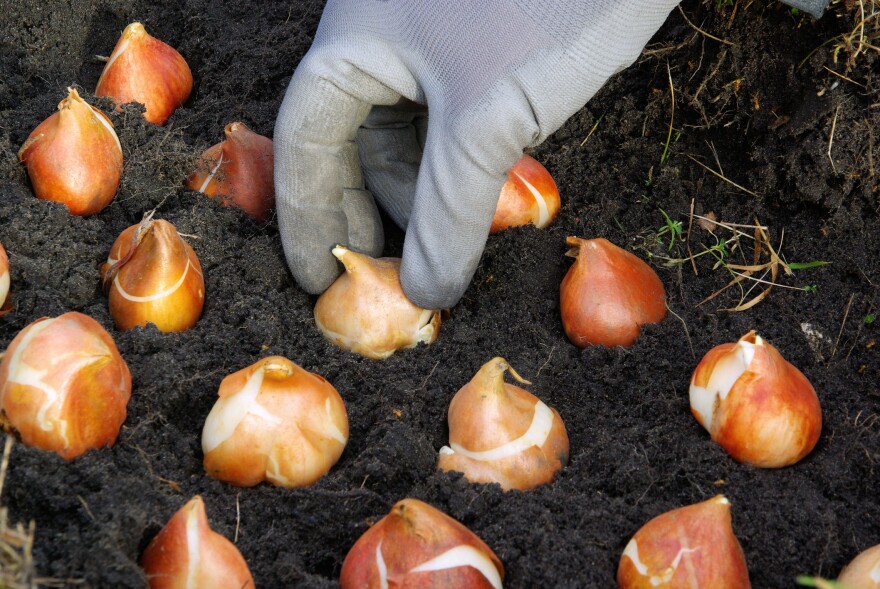After a cold, gray winter, there is something so satisfying about looking out your window and seeing bright, coloful flowers in early spring.
You can make that happen if you get a jump on bulb-planting now! Flowering bulbs like scilla, daffodils, species tulips and crocus are great candidates to plant now for a big, colorful spring pay-off.
A new way of planting flowering bulbs this year is as a naturalized planting. That means you can grow crocus on your lawn, daffodils under a tree, or species tulips in a forested area.
With some key tips, you'll have lots of beautiful spring flowering bulbs in many areas on your property and not just in traditional garden spaces.
For naturalized plantings, go for species tulips, scilla, crocus and daffodils. Hybrid varieties of tulips, for example, don't naturalize readily, nor do hyacinth bulbs.
And when you're choosing non-garden-plot spots for placing flowering bulbs, go for spaces that get a lot of sun in early spring. Try places under some old maple, oak or birch trees, before they have sprouted their canopy of leaves there. And if those same spaces are shady in the summer, that's okay - the timing will work out. The bulbs will come up and flower, then die back about the same time as the tree leaves begin to really fill in.
A note on naturalized scilla on your lawn; it will indeed look gorgeous in the spring but after the bulbs are done flowering and the leaves naturally turn yellow, your lawn may look a bit shaggy and unkempt. Resist the temptation to mow it, as this is when all those flowering bulbs are dropping their seed for next year.
A listener asks about ridding garden spaces of tomato blight
Q: Dear Charlie, despite taking all the recommended precautions from spring onward, my tomato plants developed early blight and survived just long enough to produce a small crop. What should I do to make sure that tomato blight doesn't come back next year? - Sharon, in Braintree
A: Some home gardeners' tomato plants suffered a lot of blight this year, most likely due to the wetter summer months. Gardeners experienced early blight, late blight and even septorial leaf spots on their tomato plants.
Getting rid of it depends on which kind. Late blight, for example, has to overwinter on living tissue for it to stick around. If you can clean up the area where the tomato plants were - remove any tomatoes from the soil, take off all the stems and leaves - this helps reduce the chance that the blight will stick around for next year.
Others problems, like septorial leaf spot, will actually have spores that can overwinter on stakes and cages. Wash them down with a 10% bleach solution and store any stakes and cages for the winter to help reduce the inoculum.
You can go a step further with another great proactive step: rotate where you plant your tomatoes by trying a different area of your garden next year.
What to do about out-of-control comfrey
Q: Charlie, I just got to ask! The comfrey in my garden is going so overboard. There's like 10 plants that are the size of washing machines. Can you please help me get it out of there before next spring, please? - a caller with a comfrey problem
A: Perhaps you could get a hungry goat! Otherwise, if the frost hasn't killed it yet, cut it down to the ground. And then next spring, keep cutting and mowing it down.
Next summer, dig the comfrey out and remove as much of its root system as you can. You can share comfrey root with a friend or neighbor who would like to grow their own.
Any roots left behind will send up new comfrey plants next spring. Once again, you can mow it down to keep on top of its size.
All Things Gardening is powered by you, our audience! Send us your toughest conundrums and join the fun. Submit your written question via email, or better yet, leave a voicemail with your gardening question so we can use your voice on the air! Call Vermont Public at 1-800-639-2192.
Listen to All Things Gardening Sunday mornings at 9:35 a.m., and subscribe to the podcast to listen any time."








